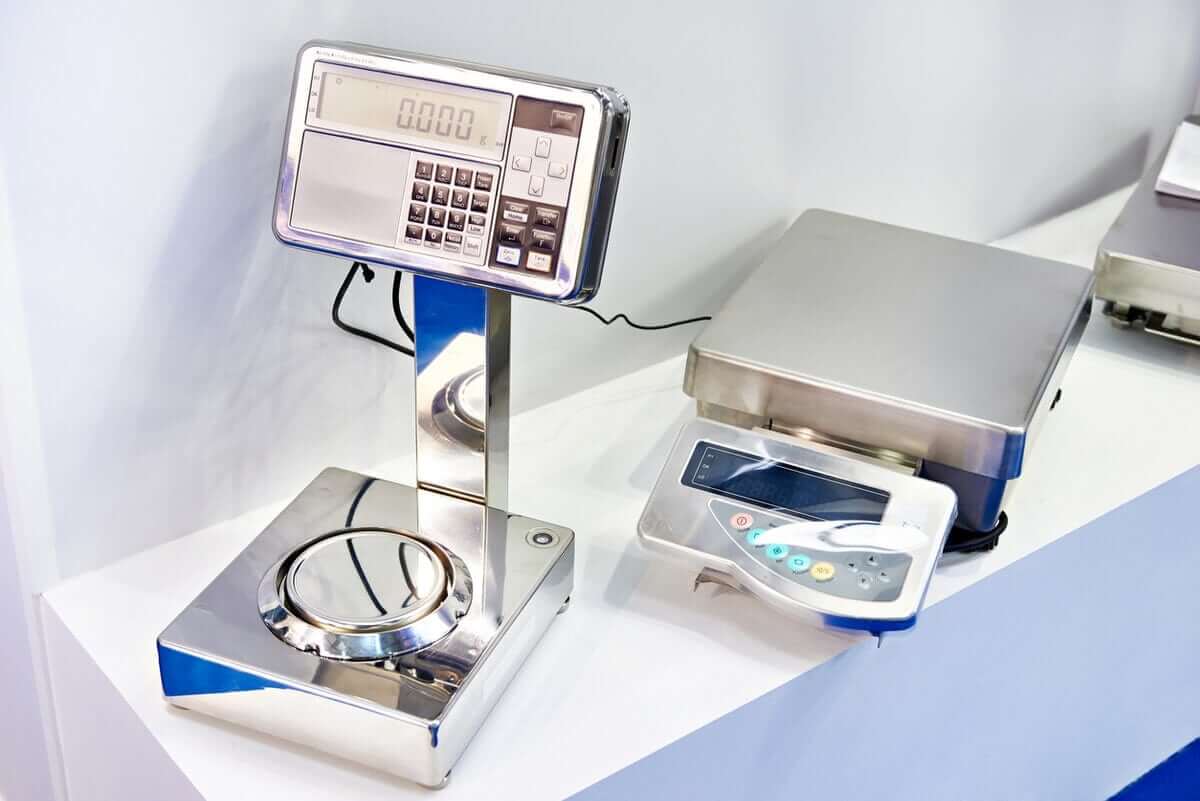Regardless of your industry, you want precise weighing data for your products — excluding packaging and other non-product weight. Taring your scale is the best way to ensure one-off or repetitive weighing with maximum accuracy. But, as you’ll soon see, scale taring can be used in multiple ways to improve weighing productivity and accuracy.
What Does It Mean to Tare a Scale?
Taring an industrial scale adjusts the weight of the current load to zero. So, if you place a plastic container, cardboard box, or even a whole truck on a scale, pressing the tare button subtracts the weight of that container and reverts the displayed weight to zero.
You can start loading the product, and the scale will only measure the product’s weight. As a result, the scale automatically removes the tare weight (container weight) from the gross weight (total weight) and displays only the net weight (total minus container).
Why Is It Important to Tare the Scale?
Tare weight, sometimes called unladen weight, is the weight of empty containers or transport vehicles. It allows you to get an accurate net weight for products or materials. Taring the scale is vital when estimating shipping fees, tolls, and the baseline price of products.
How Scale Taring Helps Different Industries
While taring is essential for providing accurate weighing data, it can also help increase operational efficiency and better support your bottom line. Here are just a few examples of how tare weight can help different businesses.
Weighing Out Manufactured Products
Using the tare function makes filling containers with a specific weight far easier. Instead of manually adding the product weight to the packaging, let the scale do everything for you.
Here’s a simple example. Say you want to measure precisely 2 lbs of your manufactured product and package it into a cardboard box. You would follow these steps:
- Place the cardboard box on the scale (the scale shows its weight).
- Press the tare button (the box weight is subtracted, and the scale shows zero).
- Load the product until the scale displays 2 lbs.
There’s no need to separately weigh out your product before placing it in the box. Plus, if you’re using uniform boxes with the same weight, you don’t have to tare each time, making it faster to fulfill multiple orders.
Efficient Shipping
Taring the scale provides tons of benefits and increases efficiency in our everyday lives without most people even realizing it. For example, the shipping industry relies on taring systems to calculate the amount of shipped goods without removing them from the truck for manual measuring. If all goods had to be measured individually, shipping times would be dramatically longer and supply chains would get jammed up.
Benefits for the Healthcare Industry
Hospitals and elderly care facilities also benefit from scale taring. By taring wheelchair weights, medical staff can get accurate patient weights. Without this function, nurses would need to weigh the patient with the wheelchair and manually subtract the weight, which is time-consuming and leaves room for error.
Enhanced Productivity With Repetitive Weighing
You can also pre-program the tare weight for repetitive weighing. As a result, your production and packaging can become far more efficient. When applied correctly, the tare function can make almost any facility more productive and profitable. It’s a simple feature found on most weighing scales, but it dramatically impacts industries of every stripe.
Taring the Scale for Easier Chemical Or Powder Mixing
If you need to mix powdered or liquid compounds with precise measurements, you can use the tare feature to speed up the process. You don’t need to measure each ingredient separately before mixing them. The tare function lets you measure each component while you load them in the mix, streamlining the process and improving productivity and your bottom line.
Say you need to combine 1 oz of Chemical A with 0.5 oz of Chemical B. You could tare the container to remove its weight. Then, add 1 oz of Chemical A and tare the weight to zero again before adding 0.5 oz of Chemical B to the mix. The process is much easier than manually measuring all the weights, including the container weight.
How Is Tare Different From Zeroing the Scale?
The zeroing function sets the scale to zero without any added weight. While taring the scale subtracts unwanted weight, zeroing the scale is a calibration.
The zero function should be used to recalibrate an empty scale if it’s slightly off, not to subtract the weight from containers. If you zero the scale with a container on it, the scale no longer knows its true zero and may provide inaccurate measurements moving forward.
If your scale’s calibration is off, you can turn to UniFide CST. We provide ISO-Accredited scale calibration services to keep you compliant with the Department of Agriculture and Trade & Consumer Protection. Request our calibration services, and our technicians will get you back on track.
How to Tare a Scale
Using a tare function on digital scales is straightforward. Load the container or any other weight you want to disregard, press the tare key, and the weight will reset to zero.
Mechanical scales can tare a limited weight by sliding a tare bar left and right between its limit points. Digital scales are more convenient and faster to use since you don’t have to balance the tare weight manually.
Whether using a digital or mechanical scale, you need to be careful not to overload the scale by accident when taring. The total weight of the container and its load shouldn’t exceed the scale’s maximum capacity.
Trust UniFide CST For Maximum Accuracy And Reliability
Don’t let inaccurate scales affect your operation. UniFide CST carries a wide range of precision scales designed to meet your needs with exceptional accuracy and reliability. Contact us today to learn how our scales can help you achieve precise measurements in your operations.
